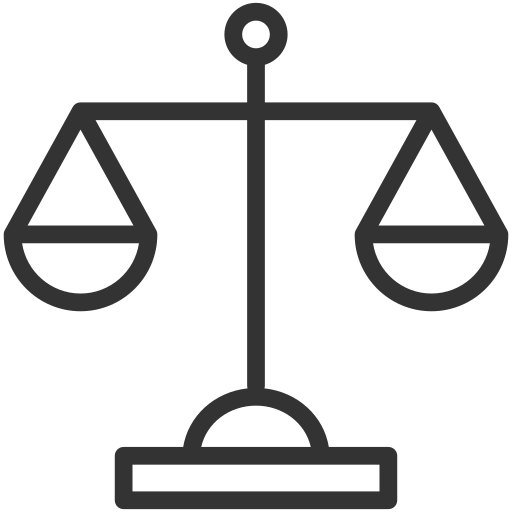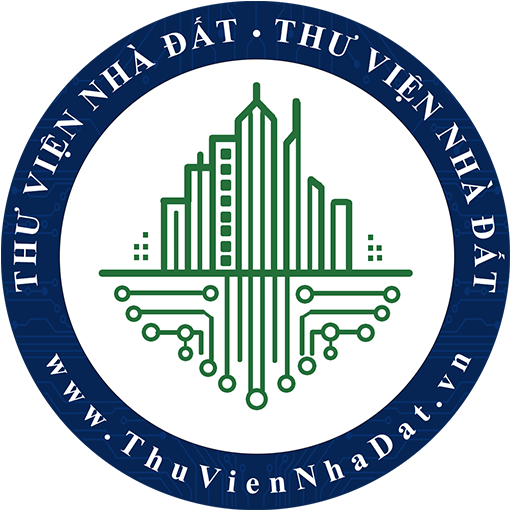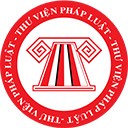|
NATIONAL
ASSEMBLY |
SOCIALIST
REPUBLIC OF VIETNAM |
|
Law No. 53/2019/QH14 |
Hanoi, November 26, 2019 |
Pursuant to the Constitution of the Socialist Republic of Vietnam;
The National Assembly hereby passes the Law on Military Reserve Forces
This Law provides for manning and mobilization of military reserve forces; allowance and other policies; responsibilities of entities and persons for manning and mobilization of military reserve forces.
For the purposes of this Law, terms used herein shall be construed as follows:
1. Military reserve force includes reserve servicemen and technical equipment that are registered, managed and placed in reserve units to be available when permanent standing bodies of People’s Military Forces require additional manpower.
2. Reserve serviceman (reservist) comprises reserve officers, professional reserve servicemen and non-commissioned officers and reserve soldiers that are registered under the provisions of the Law on Officers of People’s Army of Vietnam, the Law on Professional Servicemen, defence employees and staff and the Law on Military Service.
3. Reserve technical equipment refers to property kept under the control of Vietnamese entities, organizations or citizens, including means of road transport, water transport, civil aviation transport, road and other construction equipment, equipment designed for loading, unloading of goods, means of communication, medical equipment and supplies, and several other equipment and accessories, all of which are registered to meet infrastructure demands of People’s Armed Forces.
4. Reserve force unit refers to a military organization that is mainly or entirely composed of reserve servicemen and technical equipment listed in the plan for provision of additional manpower for standing bodies of People’s Army; that is organized and staffed in an incomplete manner or has not yet been organized in peacetime, but has the plan for conscription of members of reserve forces or provision of additional manpower for armed forces in wartime under order for conscription of reservists.
5. Reserve specialized unit refers to a form of reserve force unit which is organized, staffed and provided with academically or professionally qualified reserve servicemen, equipment or accessories designed for their specialized duties.
6. Military career refers to a profession or specialized occupation corresponding to a rank of an enlisted member of the People’s Army.
7. Mobilization of reserve forces refers to calling up reserve servicemen and mustering reserve technical equipment for transfer to standing military forces of the People's Army under the provisions of this Law.
8. Owner of reserve technical equipment refers to a Vietnamese entity, organization or citizen having the right to own or use reserve technical equipment which is registered, managed and placed in a reserve unit.
Article 3. Principles of manning and mobilization of military reserve forces
1. Abide by the Constitution and laws of the Socialist Republic of Vietnam; be placed under the direct, absolute and all-round leadership of the Communist Party of Vietnam, the domination of the State President, the centralized and unified management of the State, and the command or direction of the Minister of National Defence.
2. Establish military reserve forces having political, spiritual and organizational strengths, high combat level, and put under strict management.
3. Mobilize all-people strengths.
4. Closely combine socio-economic growth with national defence and security enforcement; adapt to the domestic socio-economic growth context.
5. Man and mobilize reserve forces that have the required number of reservists and reserve technical equipment; conform to prescribed standards and time schedule; ensure confidentiality and safety according to laws and approved plans.
6. Apply engineering and technological achievements and advances to establishment and mobilization of reserve forces.
Article 4. Responsibilities of servicemen assigned as members of reserve forces
1. Servicemen assigned as members of reserve forces shall assume the following responsibilities:
a) Take health checks-up;
b) Obey training, drilling, mobilization and fighting readiness assessment commands;
c) Carry out rules and regulations on daily activities of reserve units and duties assigned by commanders;
d) Carry out commands of mobilization of reservists for provision of additional manpower for standing forces of the People’s Army.
2. Servicemen holding commander ranks in reserve forces shall assume the following responsibilities:
a) Observe regulations laid down in clause 1 of this Article;
b) Grasp the number and quality of reservists of reserve units under their command; ensure their reserve unit's operations are conformable to prescribed rules and regulations for daily activities and carry out the stated reporting regime;
c) Manage and command their reserve units during training, drilling sessions or mobilization and combating readiness assessments;
d) Manage and command their reserve units to provide additional manpower for standing forces of the People’s Army.
1. Owners of reserve technical equipment shall be obliged to comply with decisions on mobilization, assembly or concentration of reserve technical equipment; may be eligible for taking back reserve technical equipment, being paid fees and compensations for any loss or damage arising from mobilization or assembly of reserve technical equipment.
2. Operators of reserve technical equipment shall be obliged to comply with mobilization decisions; may be granted allowance or other incentive policies prescribed herein.
1. Owners of reserve technical equipment may be entitled to compensation packages if:
a) Such reserve technical equipment is damaged, lost or destroyed;
b) These owners lose income owing to mobilization or assembly of reserve technical equipment.
2. Persons authorized to make decisions on mobilization, assembly or concentration of reserve technical equipment shall be responsible for compensating for loss or damage incurred therefrom. The rate of compensation and payment of compensation amounts to owners of reserve technical equipment shall be the same as compensation paid to persons whose property are legally appropriated by the state in accordance with laws on state procurement and appropriation of property.
In cases where reserve technical equipment to be mobilized or assembled is an asset that the State allocates to a state agency or public service provider, and such equipment is damaged, lost or destroyed, all repair or new purchase expenses shall be reimbursed in accordance with laws on state budget.
Article 7. Prohibited acts during establishment and mobilization of military reserve forces
1. Evade carrying out responsibilities of reserve servicemen, or obligations of owners of reserve technical equipment which is mobilized or assembled.
2. Object to and hinder establishment and mobilization of military reserve forces.
3. Mobilize and assemble military reserve forces without conforming to approved plans.
4. Make use of or abuse the performance of reserve force establishment and mobilization tasks to infringe upon the national interests or legitimate rights and interests of agencies, organizations or individuals.
5. Perform the act of gender discrimination during the period of establishment and discrimination of military reserve forces.
ESTABLISHMENT, MOBILIZATION AND RECEPTION OF MILITARY RESERVE FORCES
Section 1. PLAN FOR ESTABLISHMENT, MOBILIZATION AND RECEPTION OF MILITARY RESERVE FORCES
1. The Ministry of National Defence shall lead and cooperate with the Ministry of Planning and Investment, other Ministries, Ministry-level agencies and Governmental organs in development of the State Plan for establishment and mobilization of military reserve forces.
2. Ministries, Ministry-level agencies and Governmental organs tasked with establishing and mobilizing reserve forces shall develop plans for establishment and mobilization of military reserve forces under their jurisdiction.
Affiliates directly controlled by Ministries, Ministry-level agencies and Governmental organs tasked with establishing and mobilizing reserve forces shall develop plans for establishment and mobilization of military reserve forces under their respective jurisdiction.
3. Provincial or district-level People’s Committees shall develop plans for establishment and mobilization of local reserve forces.
4. The Minister of National Defense shall be accorded authority to develop plans for mobilization and reception of military reserve forces under the control of People’s Military units.
1. Plan for establishment of a military reserve force shall have the following subject matters:
a) Personnel organization structure of each reserve unit;
b) Organization structure of administration over each reserve unit;
c) Conscription and training of reserve officers;
d) Drilling, practice, mobilization and fighting readiness assessments;
dd) Information related to Party’s and political affairs;
e) Logistical, technical and financial accommodations and arrangements.
2. Plan for mobilization of a military reserve force shall have the following subject matters:
a) Notification of mobilization decisions or commands;
b) Concentration, movement, embarkation and debarkation of reservists and reserve technical equipment;
c) Information related to Party’s and political affairs;
d) Logistical, technical and financial accommodations and arrangements;
dd) Command or direction over mobilization of military reserve forces;
e) Protection and security measures for concentration, movement, embarkation and debarkation of reservists and reserve technical equipment.
3. Plan for reception of a military reserve force shall have the following subject matters:
a) Decisions regarding implementation of duties to receive reserve forces;
b) Reception of reservists and reserve technical equipment;
c) Information related to Party’s and political affairs;
d) Logistical, technical and financial accommodations and arrangements.
Article 10. Plan assessment and approval
1. The Ministry of National Defence shall lead and cooperate with the Ministry of Planning and Investment in submission of the State Plan for establishment and mobilization of military reserve forces to the Prime Minister to seek his approval decision.
2. The Ministry of National Defense shall carry out assessment; the Prime Minister shall make his decision on approval of the plans for establishment and mobilization of reserve forces submitted by Ministries, Ministry-level agencies or Governmental bodies.
3. Military Command Committees of Ministries, Ministry-level agencies and Governmental bodies shall carry out assessment; Ministers and heads of Ministry-level agencies and Governmental bodies shall be accorded authority to make approval decisions of plans for establishment and mobilization of reserve forces under their respective remit.
4. In-charge Departments of the Ministry of National Defense shall carry out assessment; the Minister of National Defense shall be accorded authority to make decisions on approval of plans for mobilization and reception of reserve forces after receipt thereof from military zones, plans for establishment and mobilization of reserve forces submitted by Hanoi People’s Committee.
5. In-charge Departments of military zones shall carry out assessment; the Commanders of military zones shall be accorded authority to make decisions on approval of plans for establishment and mobilization of reserve forces after receipt thereof from provincial-level People’s Committees.
6. Hanoi Capital High Command, Ho Chi Minh city’s High Command or other provincial-level Military Command Committees shall lead and cooperate with entities specialized in planning and investment activities under the control of provincial-level People's Committees, and other relevant entities, in assessment; Chairpersons of provincial-level People’s Committees shall be accorded authority to make decisions on approval of plans for establishment and mobilization of reserve forces after receipt thereof from district-level People’s Committees.
7. Senior agencies shall directly carry out assessment; heads of these senior agencies shall directly make decisions on approval of plans for reception of reserve forces submitted by units under their jurisdiction in the People’s Army.
Article 11. Review, revision and formulation of plans
1. Every year, entities and units assigned to prepare plans for establishment, mobilization and reception of reserve forces must review these plans; must submit them to competent entities prescribed in Article 10 herein to seek their decisions on any modification of existing ones or preparation of new ones in the cases specified in clause 2 and 3 of this Article.
2. Plans for establishment, mobilization and reception of reserve forces shall be revised if there is any change in their contents to the extent of making these plans replaced by new ones.
3. Plans for establishment, mobilization and reception of reserve forces must be replaced by new ones if:
a) The number of reservists or reserve technical equipment is changed at least 30%;
b) Localities of embarkation or units of debarkation of reservists or reserve technical equipment are changed.
Section 2. ESTABLISHMENT OF MILITARY RESERVE FORCES
Article 12. Registration and management of reservists
1. Commune-level Military Command Committees or those ones of districts where none of commune-level administrative units exists shall consider granting local citizens registration as reservists.
Military Command Committees of entities or organizations shall grant reservist registration to citizens currently working, learning or on duty at their workplace. In cases where entities or organizations do not operate any Military Command Committees, heads or legal representatives of these entities or organizations shall be responsible for enabling citizens working, learning or on duty at their workplace to have access to reservist registration at their local residence.
2. Commune-level People’s Committees or People’s Committees of districts where none of commune-level administrative units exists shall carry out administration of local reservists residing within their respective jurisdiction.
3. District-level Military Command Committees in collaboration with entities and organizations shall manage reservists currently working, learning and on duty at these entities and organizations within their respective remit.
4. The Government shall regulate documentation requirements and procedures for registration of reservists as provided in clause 1 of this Article.
Article 13. Registration and management of reserve technical equipment
1. Registration offices in charge of granting registration for ownership of means of civil aviation transport, water transport or inland water transport, which are affiliated to the Ministry of Transport, and registration offices in charge of granting registration for public fishery and fishery resources surveillance vessels, which are under the control of the Ministry of Agriculture and Rural Development, shall be responsible for annually providing information about registration of reserve technical equipment for the Ministry of National Defense for registration and management purposes.
2. Local registration offices in charge of granting registration for ownership of means of inland water transport, road transport or means of communication or medical equipment or supplies shall be responsible for annually providing information about registration of reserve technical equipment for People’s Committees of districts where owners thereof reside for registration and management purposes.
3. Commune-level People’s Committees, entities or organizations shall, on an annual basis, provide reports and information on reserve technical equipment not falling into the cases specified in clause 1 and 2 of this Article to People’s Committees of districts where owners thereof reside or these entities or organizations are based for registration and management purposes.
4. The Government shall regulate the List of reserve technical equipment and registration or management of these reserve technical equipment.
Article 14. Allocation of targets for establishment of military reserve forces
1. The Prime Minister shall set targets for establishment of reserve forces for Ministries, Ministry-level agencies, Governmental bodies, provinces or centrally-affiliated cities.
2. Based on targets set and allocated by the Prime Minister, allocation of targets for establishment of reserve forces shall be regulated as follows:
a) Minister of National Defence shall make decisions on the organizational size, type of each reserve unit and the number of reserve units that Ministries, Ministry-level agencies, Governmental bodies or provincial-level People’s Committees must follow; shall make decisions on reception targets of reserve forces and adopt regulations on mobilization of reserve forces in response to different states of readiness for combat under the commands of People's Military units;
b) Ministers, Heads of Ministry-level agencies and Governmental bodies shall allocate targets for establishment of reserve forces to their subordinate entities or affiliates;
c) Chairpersons of provincial-level People’s Committees shall allocate targets for establishment of reserve forces to their subordinate entities or affiliates and district-level People's Committees. Chairpersons of district-level People’s Committees shall allocate targets for establishment of reserve forces to commune-level People’s Committees.
Article 15. Personnel organization structures of reserve units
1. Reserve servicemen or technical equipment listed in plans for provision of additional personnel for standing forces of the People’s Army shall be divided into reserve units.
2. Reserve units must ensure the adequate number of reserve personnel, reserve technical equipment and the number thereof on standby accounting for between 10% and 15% of the existing number, and must keep adequate stock of weapons and technical equipment for future use under their assigned duty.
Article 16. Placement of reserve servicemen into reserve units
1. Place reserve servicemen meeting health standards and having military careers into positions corresponding to specific ranks in respective personnel structures; combine conscription areas with mobilization areas; in case of reserve personnel shortage, reservists whose military careers are similar to ranks in the personnel structures may be placed into demanding reserve units.
2. Place reserve servicemen, non-commissioned officers or reserve soldiers according to the hierarchical system under which reserve servicemen, non-commissioned officers or class-I reserve soldiers are placed first while class-II reserve soldiers are placed later in case of reserve personnel inadequacy.
3. Place reservists into reserve units under the control of major combat operations first and into local combat operations later.
Article 17. Age of reserve servicemen placed into reserve units during peacetime
1. Age of reserve officers placed into reserve units shall be subject to regulations laid down in the Law on Officers of the People’s Army.
2. Age of reserve career servicemen, non-commissioned officers and soldiers placed into reserve units shall be subject to the following regulations:
a) Male reserve career servicemen who are aged 40 years or less, and reserve non-commissioned officers or soldiers who are aged 35 years or less, are eligible for being placed into combat operations;
b) Male reserve career servicemen, non-commissioned officers or soldiers aged 45 years or less, and female reserve servicemen aged 40 years or less, are eligible for being placed into combat support operations.
Article 18. Placement of reserve technical equipment into reserve units
Reserve technical equipment placed into reserve units must have operational functions to meet specific demands of the People’s Military units; in case of none of such technical equipment, technical equipment having similar operational functions must be provided.
Provincial-level or district-level People’s Committees shall lead and cooperate with standing units of the People’s Army that have to meet targets for reception of reserve forces in placement of reservists and reserve technical equipment into respective reserve units.
1. Appointment to and discharge from office; degradation or dismissal; appointment, promotion, demotion or deprivation of military rank; removal of reserve officers from the reserve active-status list, shall be subject to regulations enshrined in the Law on Officers of the People’s Army of Vietnam.
2. Appointment or promotion in military rank or removal of career servicemen from the reserve active-status list shall be subject to the Law on Career Servicemen and National Defence Workers and Employees.
3. Appointment to office; degradation or dismissal; appointment, promotion or demotion in military rank; stripping of servicemen title or removal of reserve non-commissioned officers or soldiers from the reserve active-status list, shall be subject to regulations enshrined in the Law on Military Service.
Article 21. Conscription and training of reserve officers
1. The Prime Minister shall be accorded authority to decide annual targets for training of reserve officers.
2. Based on the Prime Minister’s decisions, the Minister of National Defence shall decide targets in the number of reserve officers to be trained in specific disciplines, and allocate them to Ministers, Ministry-level agencies, Governmental bodies and provincial-level People’s Committees to get them completed.
3. The Government shall regulate eligible candidates and standards for conscription and training of reserve officers.
1. The Prime Minister shall decide annual targets for training, practice, mobilization and combat readiness assessment of reserve servicemen, technical equipment or reserve units, and allocate them to Ministries, Ministry-level agencies, Governmental bodies, provinces and centrally-affiliated cities.
2. Based on the Prime Minister’s decisions, allocation of targets in training, practice, mobilization or combat readiness assessment of reserve servicemen or technical equipment or reserve units shall be subject to the following regulations:
a) Ministers, Heads of Ministry-level agencies or Governmental bodies may allocate targets in training, practice, mobilization or combat readiness assessment to entities or units under their jurisdiction;
b) Chairpersons of provincial-level People’s Committees may allocate targets in training, practice and mobilization or combat readiness assessments to district-level People's Committees. Chairpersons of district-level People’s Committees shall allocate specific targets to commune-level People’s Committees.
3. Calling up reserve servicemen for participation in training, practice or mobilization or combat readiness assessments shall be subject to regulations enshrined in the Law on Officers of the People’s Army of Vietnam, the Law on Career Servicemen, National Defence Workers and Employees, or the Law on Military Service.
4. Reserve servicemen may be granted suspension of training, practice, mobilization or combat readiness assessments in the following cases:
a) Such training, practice or assessment coincides with entrance examinations of public servants and employees; tests for promotion in technician grade, public servant or employee rank; tests at end of academic semesters or courses, all of which are confirmed by entities or organizations where reserve servicemen are working, learning or on duty;
b) Reserve servicemen are unable to participate in the aforesaid events because of getting sick or falling into difficult family or personal situations, which is certified by People's Committees of communes or districts where there is none of commune-level administrative subdivisions in which these reserve servicemen are residing, or entities or organizations where these reserve servicemen are working, learning or on duty.
5. Ministers, Heads of Ministry-level or Governmental bodies shall make decisions on fixed-term assembly of reserve technical equipment already placed into reserve units under the control of Ministries, Ministry-level agencies or Governmental bodies for the purposes of training, practice and mobilization or combat readiness assessments.
Provincial-level People’s Committees shall decide to the number and assembly duration of reserve technical equipment already placed into reserve units to serve training, practice, mobilization or combat readiness assessment purposes.
Chairpersons of district-level People’s Committees shall supervise implementation of decisions issued by Chairpersons of provincial-level People’s Committees on assembly of specific reserve technical equipment.
6. Training reserve units under the control of the Hanoi capital's High Command, Ho Chi Minh city's High Command and provincial-level Military Command Committees shall be organized at provincial-level reserve force training establishments.
Training reserve units not under the control of the Hanoi capital's High Command, Ho Chi Minh city's High Command and provincial-level Military Command Committees shall be subject to regulations adopted by the Minister of National Defence.
7. The Government shall regulate provincial-level reserve force training establishments referred to in clause 6 of this Article.
Article 23. Daily routine of reservists
1. District-level People’s Committees shall take charge of daily routine of establishing reserve servicemen holding reserve unit commander ranks, including squad commanders and those holding equivalent ranks.
2. Commune-level People’s Committees and People’s Committees of districts where commune-level administrative subdivisions do not exist shall take charge of establishing daily routine of reserve servicemen already placed into reserve units.
3. The Minister of National Defense shall regulate forms, contents and time of daily routine of reserve servicemen.
Section 3. MOBILIZATION AND RECEPTION OF MILITARY RESERVE FORCES
Article 24. Cases of mobilization of reserve forces
1. Reserve forces shall be mobilized under general or local mobilization commands.
2. Reserve forces shall be mobilized under martial law orders.
3. Reserve forces shall be mobilized if there is any threat to national security, social order or safety which is not so serious that a state of emergency needs to be declared.
4. Reserve forces shall be mobilized to prevent, control and mitigate consequences of calamities, natural disasters or dangerous diseases.
Article 25. Mobilizing reserve forces under general or local mobilization commands
1. The Prime Minister shall decide the number of reservists and reserve technical equipment to be mobilized by Ministries, Ministry-level agencies, Governmental bodies, provinces and centrally-affiliated cities.
2. Based on the Prime Minister’s decisions, the Minister of National Defense shall order mobilization of reserve units under the command of Ministries, Ministry-level agencies, Governmental bodies and provinces or centrally-affiliated cities.
3. Based on the Prime Minister’s decisions, orders of mobilization given by the Minister of National Defense or mobilization of reserve forces shall be subject to the following regulations:
a) Authorized persons specified in the Law on Officers of the People’s Army of Vietnam, the Law on Career Servicemen, National Defence Workers or Employees and the Law on Military Service shall decide to call up reservists to active military duty;
b) Ministers, Heads of Ministry-level agencies or Governmental bodies shall decide to assemble or concentrate reserve technical equipment from reserve units under their jurisdiction;
c) Chairpersons of provincial-level People’s Committees shall decide to mobilize reserve technical equipment within their remit; if units of the People's Army do not have operators, they may decide to mobilize reservists to be appointed to operators of such equipment.
Chairpersons of district-level People’s Committees shall supervise implementation of decisions issued by Chairpersons of provincial-level People’s Committees on mobilization and assembly of reserve technical equipment and operators thereof.
1. Mobilizing reserve forces in response to the situations in which general or local mobilization commands are not needed shall include cases specified in clause 2, 3 and 4 of Article 24 herein.
2. Chairpersons of provincial-level People’s Committees shall decide to mobilize reserve servicemen and technical equipment in cases referred to in clause 3 and 4 of Article 24 herein.
Chairpersons of district-level People’s Committees shall supervise implementation of decisions issued by Chairpersons of provincial-level People’s Committees on mobilization of reserve servicemen and technical equipment.
3. Commanders of units of the People’s Army authorized to take charge of localities under martial law shall make decisions on mobilization of reserve servicemen and technical equipment.
4. The Government shall elaborate on this Article.
Article 27. Notification of reserve force mobilization decisions and commands
1. Reserve force mobilization decisions and commands must be informed in a timely and accurate manner. Such notification must be issued according to the administrative system from central to grassroots level and from the Ministry of National Defense to military units at all levels or standing bodies of the People’s Army.
2. Responsibilities for notification of reserve force mobilization decisions or commands shall be subject to the following regulations:
a) The General Staff shall inform the decisions on mobilization of reserve units issued by the Minister of National Defense to Ministries, Ministry-level agencies, Governmental bodies, provincial-level People’s Committees, and affiliates of the Ministry of National Defense, and shall direct notification of mobilization commands to local military entities and grassroots units of the People’s Army;
b) Ministries, Ministry-level agencies and Governmental bodies shall inform decisions on mobilization of reserve units issued by Ministers, Heads thereof to units under their jurisdiction, and shall direct notification of mobilization decisions to grassroots-level units;
c) Provincial-level People’s Committees shall inform decisions on mobilization of reserve units issued by Chairpersons thereof to entities or units under their authority, related associations and district-level People’s Committees.
Hanoi capital’s High Command, Ho Chi Minh city’s High Command and provincial-level Military Command Committees shall inform reserve force mobilization commands of Commanders thereof and orders of calling up reserve officers to active military duty which are given by jurisdictional authorities to district-level military bodies;
d) District-level People’s Committees shall inform decisions on mobilization of reserve servicemen issued by Chairpersons thereof to commune-level People’s Committees, related entities or organizations.
District-level military bodies shall inform decisions on mobilization of reserve technical equipment issued by Chairpersons of provincial-level People's Committees, commands of calling up reserve officers to active military duty issued by senior entities, and inform orders of calling up reserve career servicemen, non-commissioned officers or soldiers to active military duty issued by Commanders of district-level Military Command Committees, to commune-level People's Committees and other related entities or organizations;
dd) Commune-level People’s Committees and People's Committees of districts where none of commune-level administrative subdivisions exist, responsible entities or organizations shall be responsible for sending commands of calling up reservists to active military duty issued by senior entities to all owners of reserve technical equipment;
e) Local military bodies and standing units of the People's Army having the duty to embark and disembark reserve forces shall have to inform each other about such embarkation and debarkation of reserve forces.
3. Duration of completion of notification of decisions and commands over mobilization of reserve servicemen and technical equipment must be documented in the plans for mobilization of reserve forces.
4. The Minister of National Defense shall regulate notification of reserve force mobilization decisions and commands.
Article 28. Concentration, transportation, embarkation and debarkation of reserve forces
1. District-level or commune-level People’s Committees, entities or organizations shall, within their duties and authority, carry out concentration, transportation and handover of reserve forces to standing bodies of the People’s Army; shall receive reserve forces going back after completion of their duties.
2. Standing bodies of the People’s Army shall receive reserve forces that they accept as their additional manpower; shall hand over reserve forces to all-level People's Committees, entities or bodies after they have fulfilled their duties.
3. Reserve force mustering venues shall be decided by district-level People’s Committees. Reserve force debarkation venues shall be decided by standing bodies of the People’s Army.
4. The Minister of National Defense shall provide specific regulations on this Article.
1. Reserve servicemen already placed into reserve units shall be entitled to allowance.
2. Reservists appointed to rank of commanders of reserve units, including squad commanders or those holding equivalent or higher ranks, shall be entitled to allowance for responsibility for management of these reserve units and may reject allowance prescribed in clause 1 of this Article.
3. The Government shall regulate rate of allowance, conditions and time of entitlement to such allowance.
1. Pay and allowance policies granted to reserve servicemen shall be regulated as follows:
a) Reserve servicemen currently working, learning or on duty at entities or organizations, and receiving wages or salaries from the state budget, shall be entitled to full payment of these wages and salaries, allowances, subsidies, benefits, travel fees and fares by entities or organizations where they are working, learning or on duty. If the rate of wage or salary or allowance is lower than the rate of wage, salary or allowance applied to the People’s Army, units of the People’s Army shall be liable for differential amounts;
b) Reservists that are not classified as those subject to point a of this clause shall be entitled to daily allowance calculated based on base pay rates applied to officers, career servicemen on active service or equaling the rate of allowance based on specific military ranks of non-commissioned officers or soldiers on active duty; fares and travel allowance paid to servicemen on active duty.
2. Reserve servicemen shall be allocated or borrow military equipment and personal stuff, and shall be entitled to allowance for meal costs according to existing support policies granted to officers, career servicemen, non-commissioned officers and soldiers on active duty.
3. If reserve servicemen currently working, learning or on duty at entities or organizations who are on annual leave are summoned for training, practice, mobilization or combat readiness assessment, or are mobilized in cases where the situation in which general or local mobilization is not necessary arises, they may take the remaining leave days after completing their duty or take complimentary leave when appropriate.
4. If reserve servicemen who are injured or dead on duty are recognized as war invalids or revolutionary war martyrs, they and their families shall be entitled to reward and other policies prescribed in laws on relief policies for persons rendering meritorious services to the revolutionary war.
5. If reserve servicemen work under (extreme) arduous, hazardous or dangerous condition according to labor legislation, they may be entitled to remuneration and other compensation policies as so applied to other workers working under the same condition.
6. If reserve servicemen participating in social insurance or health insurance programs are sick, suffer from accidents, are dead or incapacitated, they shall be entitled to benefits or covers prescribed in legislation on social or health insurance; if they are not participating in these insurance programs, they shall be entitled to receive other support policies from the Government.
Article 31. Allowance and support policies granted to reserve servicemen’s families
Reserve servicemen’s families shall be entitled to allowance or other support policies when they are mobilized for training, practice, mobilization or combat readiness assessments in response to the situations in which general or local mobilization is not required under the Government’s regulations.
1. Operators of reserve technical equipment may receive support or subsidy for meal costs which is equal to those that infantry soldiers receive; if they are sick, suffer from accidents, are injured, dead or incapacitated, or are working under (extreme) arduous, hazardous or dangerous condition under labor law, their families and them shall be entitled to compensation or other subsidy policies as so applied to reserve servicemen.
2. Operators of reserve technical equipment currently receiving wages and salaries from the state budget shall be entitled to full payments of wages, salaries, allowance, subsidies, support, benefits, travel fees and fares which are made by entities or organizations where they are working or on duty; operators who do not receive wages or salaries from the state budget may receive payments of per-day remuneration made by units of the People's Army which are calculated based on the average income rate arising in 3 consecutive months with respect to the work that they are doing before mobilization, travel expense or fare entitlements.
1. The state budget shall provide fund for establishment or mobilization of reserve forces which is mentioned in the plan for annual expenditures of Ministries, Ministry-level organs or Governmental bodies and localities under laws on the state budget.
2. Other legitimate revenues.
Article 34. Details of payments for establishment and mobilization of military reserve forces
1. The Ministry of National Defense shall spend on the followings:
a) Registration, management and health checkup for reserve servicemen; registration and management of reserve technical equipment;
b) Training, practice, mobilization or combat readiness assessment for reserve units under the command of major combat operations, and training of conscripts for a supply of reserve officers;
c) Provision of equipment or other means for reserve command purposes; construction of muster stations for reception of reservists and reserve technical equipment of reserve units under the control of major combat operations;
d) Storage of logistical or technical materials for reserve forces under the control of major combat operations;
dd) Compensation for loss or damage of reserve technical equipment and other expenses incurred from mobilization of thereof for training, practice or mobilization or combat readiness assessment by units of the People's Army;
e) Mobilization and assembly of reserve technical equipment serving the purpose of additional provisions for standing units of the People's Army;
g) Storage of military equipment for use by nationwide reserve forces;
h) Payment of allowance to reserve servicemen as per Article 29 herein;
i) Training, printing of books, templates, preliminary or final review, provision of the adequate quantity of equipment and accessories for establishment, mobilization and reception of reserve forces;
k) Mobilization and reception of military reserve forces.
2. Other Ministries, Ministry-level bodies and Governmental agencies shall spend on the followings:
a) Organization and management of reserve units according to allocated targets;
b) Training, practice, mobilization or combat readiness assessment for specialized reserve units which are assigned by the Prime Minister; conscription of citizens eligible for training of reserve officers;
c) Mobilization and transfer of reserve units to standing units of the People’s Army;
d) Storage of reserve technical equipment according to the Prime Minister’s allocated targets;
dd) Training, printing of books, templates, provision of the adequate quantity of equipment and accessories for establishment and mobilization of reserve forces.
3. Provincial-level People’s Committees shall spend on the followings:
a) Registration and management of reserve servicemen and technical equipment;
b) Training, practice, mobilization or combat readiness assessment for reserve units under the command of local combat operations, and training of conscripts for a supply of reserve officers;
c) Provision of the adequate quantity of equipment or other means for mobilization command purposes; assurance of availability of training grounds, exercise yards or barracks used for training of reserve units, construction of muster stations for reception of reservists and reserve technical equipment in the custody of local combat operations;
d) Storage of logistical or technical materials for reserve forces under the control of local combat operations;
dd) Payment of compensation for loss or damage of reserve technical equipment and other expenses incurred from mobilization of thereof for training, practice or mobilization or combat readiness assessment by provincial-level People's Committees in the cases where general or local mobilization is not necessary;
e) Mobilization and transfer of reserve units to standing units of the People’s Army;
g) Mobilization of reserve forces in response to the situations in which general or local mobilization is not needed;
h) Payment of allowance or other financial support to reserve servicemen’s families during the period when they are mobilized for training, practice, mobilization or combat readiness assessments in response to the situations in which general or local mobilization is not required;
i) Implementation of regulations and payment of compensation policies for operators of reserve technical equipment who are mobilized under this Law;
k) Training, printing of books, templates, provision of the adequate quantity of equipment and accessories for establishment, mobilization and reception of reserve forces.
4. District-level People’s Committees shall spend on the followings:
a) Registration, management and health checkup for reserve servicemen; registration and management of reserve technical equipment and daily routine of reserve units;
b) Provision of the adequate quantity of means and equipment for mobilization command purpose, establishment of muster stations for reserve servicemen and technical equipment;
c) Storage of logistical or technical materials for reserve forces under the control of local combat operations;
d) Implementation of regulations and payment of compensation policies for operators of reserve technical equipment who are mobilized under this Law;
dd) Concentration, movement, embarkation and debarkation of reservists and reserve technical equipment.
5. Commune-level People’s Committees, entities and organization shall spend on registration, management, daily routine and health checkup for reserve servicemen; management of reserve technical equipment; concentration, transportation, embarkation and debarkation of reserve servicemen and technical equipment.
RESPONSIBILITIES OF ENTITIES AND ORGANIZATIONS FOR ESTABLISHMENT AND MOBILIZATION OF RESEVE FORCES
Article 35. The Government’s responsibilities
1. The Government shall exercise unified state management of establishment and mobilization of reserve forces.
2. Tasks involved in the state management of establishment and mobilization of reserve forces shall comprise:
a) Promulgate and submit to competent authorities for promulgation and organize the implementation of legislative documents on establishment and mobilization of reserve forces;
b) Develop and implement strategies, policies and plans regarding establishment and mobilization of reserve forces;
c) Adopt regulations, and implement compensation and other policies, regarding establishment and mobilization of reserve forces;
d) Propagate and disseminate guidelines and standpoints of the Party, state policies and laws regarding establishment and mobilization of reserve forces;
dd) Carry out inspections, assessments, sanction violations or address complaints, accusations, hold preliminary or final reviews of results of emulation, and grant rewards, regarding establishment and mobilization of reserve forces.
Article 36. Responsibilities of the Ministry of National Defence
The Ministry of National Defense shall be responsible to the Government for state management of establishment and mobilization of reserve forces and shall assume the following responsibilities:
1. Submit to the Government and the Prime Minister to seek approval of promulgation of, or promulgate within their jurisdiction, legislative documents on establishment and mobilization of reserve forces;
2. Lead and cooperate with other Ministries, Ministry-level organs and Governmental bodies in development of state strategies, policies and plans for establishment and mobilization of military reserve forces;
3. Cooperate with other Ministries, Ministry-level agencies and Governmental organs in developing their plans for establishment and mobilization of reserve forces;
4. Regulate the organizational scale, type and quantity of reserve units;
5. Lead and cooperate with other Ministries, central sectors and local authorities in developing and mobilizing reserve forces;
6. Direct and instruct military entities and units in collaboration with local authorities in establishment, mobilization and reception of reserve forces;
7. Lead and collaborate with other Ministries, central sectors, local authorities and entities or organizations concerned in inspection, assessment and imposition of sanctions against violations or handling of complaints, accusations, organization of preliminary or final reviews of results of emulation, and offer of rewards, regarding establishment and mobilization of reserve forces;
8. Lead and collaborate with other Ministries, Ministry-level organs, Governmental bodies and all-level People’s Committees in establishment of database of registration and management of reserve servicemen and technical equipment;
9. Perform other duties related to establishment and mobilization of reserve forces in accordance with laws.
Article 37. Responsibilities of other Ministries, Ministry-level agencies and Governmental bodies
1. Cooperate with the Ministry of National Defense, entities and organizations involved in formulation and implementation of plans for establishment and mobilization of reserve forces.
2. Direct and instruct their affiliates to develop specialized reserve units meeting quantitative and qualitative requirements in conformance to duty-related demands.
Article 38. Responsibilities of all-level local authorities
1. People’s Councils at all levels shall, within their duties and powers, have the following responsibilities:
a) Make decisions on funding for establishment and mobilization of local reserve forces;
b) Supervise compliance with the Constitution, laws and implementation of resolutions of People's Councils on establishment and mobilization of reserve forces.
2. People’s Committees at all levels shall, within their duties and powers, have the following responsibilities:
a) Exercise the regulatory authority over establishment and mobilization of local reserve forces;
b) Preside over and collaborate with units of the People’s Army in establishment, mobilization and reception of reserve forces.
Article 39. Responsibilities of Vietnam Fatherland Front Committee and its member organizations
Vietnam Fatherland Front Committee and its members shall, within their duties and powers, assume responsibility to raise the people's awareness of compliance with laws on reserve forces; supervise implementation of laws on reserve forces.
Article 40. Responsibilities of entities and organizations
Entities and organizations where reserve servicemen are working, learning or on duty shall be responsible for cooperating with localities in scheduling training, practice, mobilization or combat readiness assessments or implementation of duty in response to the situation in which general or local mobilization is not needed; receiving and offering work to reservists after completion of such training, practice, mobilization or combat readiness assessments and duty.
1. This Law shall take effect on July 1, 2020.
2. The Ordinance on reserve forces dated August 27, 1996 shall be repealed from the entry into force of this Law.
This Law is passed in the 8th plenary session of the XIVth National Assembly of the Socialist Republic of Vietnam held on November 26, 2019.
|
|
NATIONAL
ASSEMBLY’S CHAIRWOMAN |
------------------------------------------------------------------------------------------------------
This translation is made by THƯ VIỆN PHÁP LUẬT, Ho Chi Minh City, Vietnam and
for reference purposes only. Its copyright is owned by THƯ VIỆN PHÁP LUẬT
and protected under Clause 2, Article 14 of the Law on Intellectual Property.Your comments are always welcomed



















